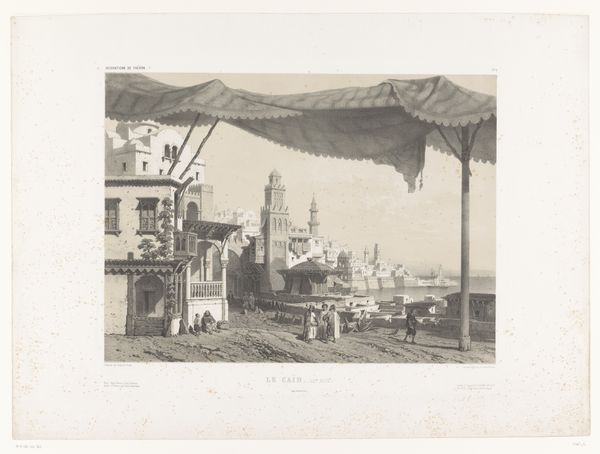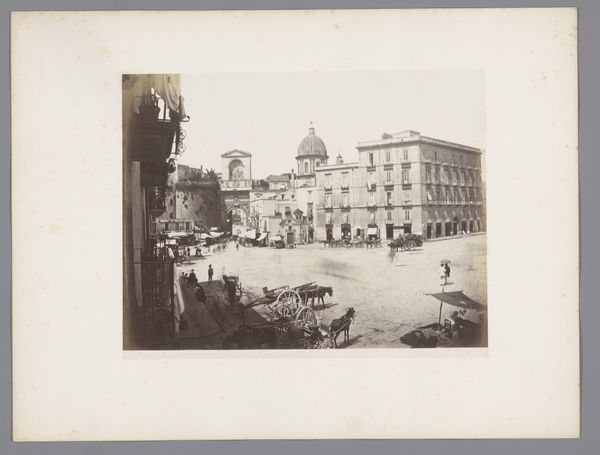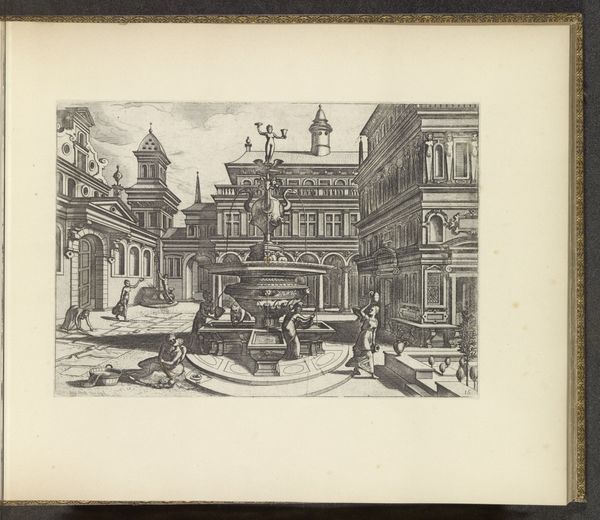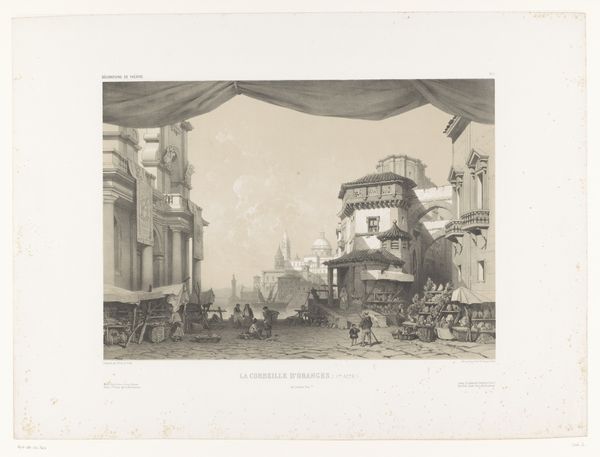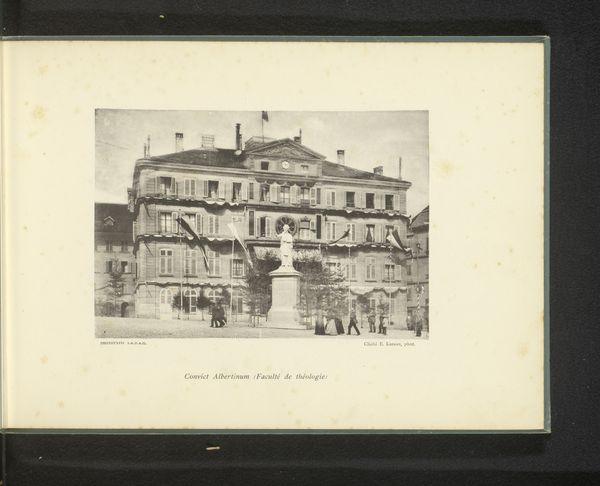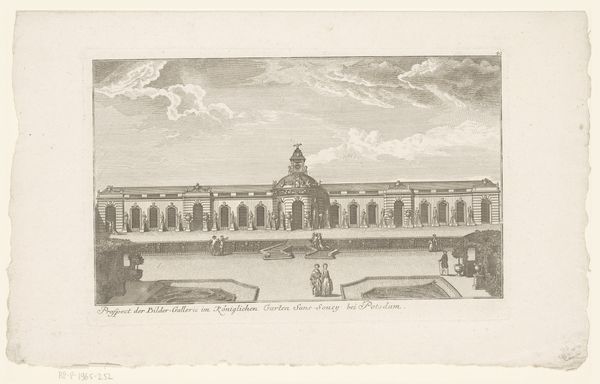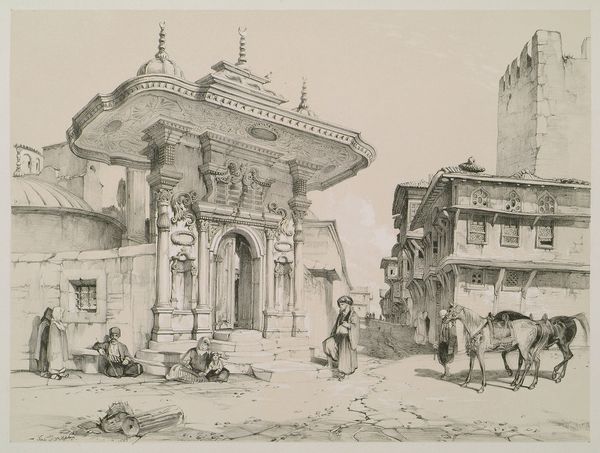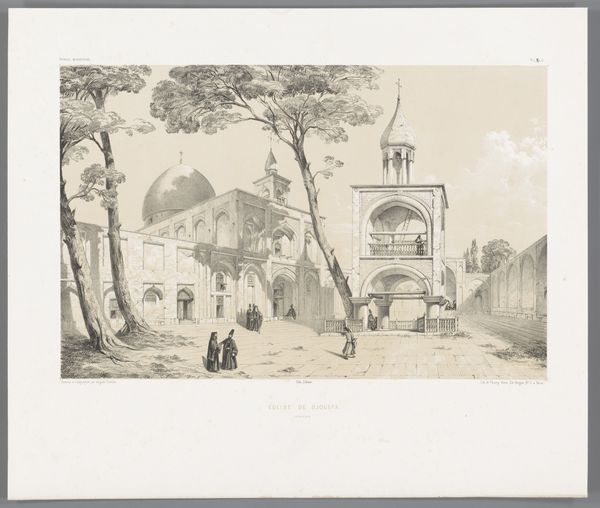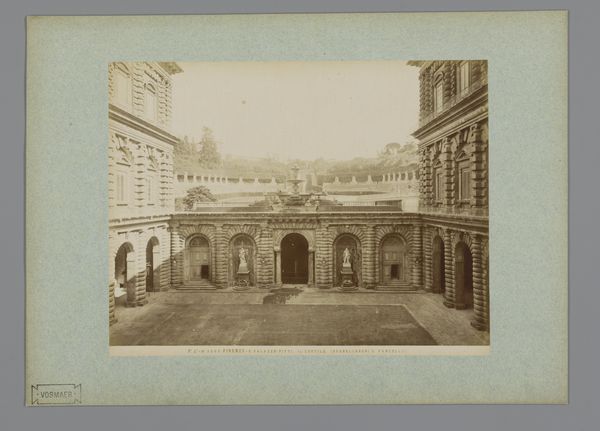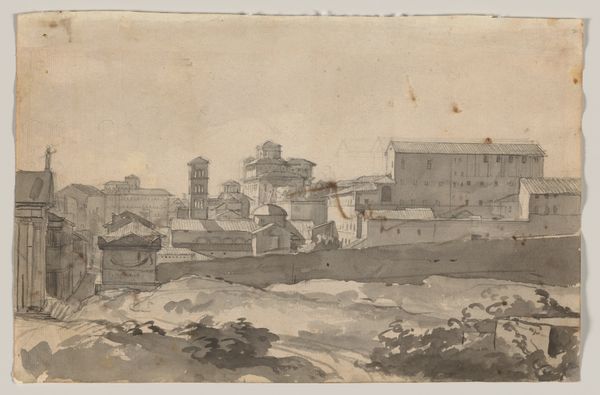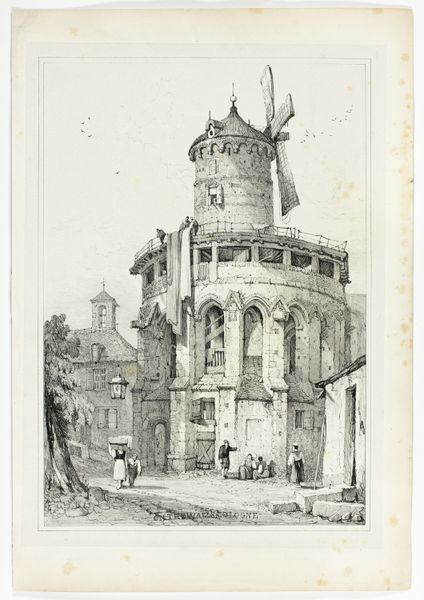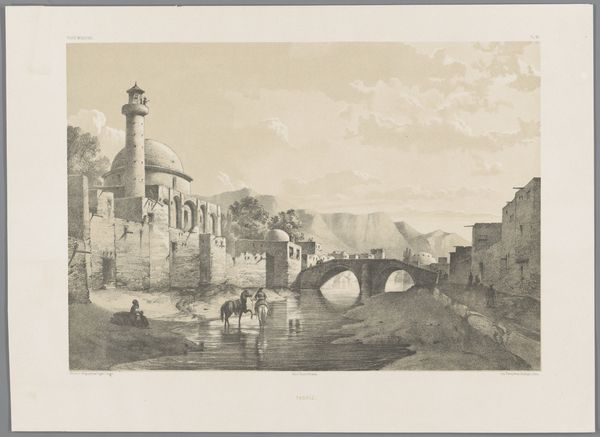
drawing, paper, ink, architecture
#
architectural sketch
#
drawing
#
aged paper
#
light pencil work
#
paper non-digital material
#
pale palette
#
pencil sketch
#
sketch book
#
landscape
#
paper
#
personal sketchbook
#
ink
#
orientalism
#
cityscape
#
islamic-art
#
watercolour illustration
#
storyboard and sketchbook work
#
architecture
Dimensions: height 393 mm, width 483 mm
Copyright: Rijks Museum: Open Domain
Editor: This is Eugène Flandin's "Paleis Char Bagh in Isfahan," created between 1843 and 1854. It’s a drawing in ink and pencil on paper, currently held at the Rijksmuseum. I’m struck by how the artist uses light to capture the details of the architecture. What can you tell me about the context in which Flandin made this work? Curator: Flandin's work falls within the broader context of Orientalism, a Western fascination with the "East" during the 19th century. It is key to recognize that such artistic endeavors often occurred hand-in-hand with imperial projects. How do you think Flandin's position as a European artist shaped his representation of Isfahan? Editor: I guess that Flandin’s interpretation may idealize or exoticize the palace in line with European expectations. Did his work serve a specific political purpose at the time? Curator: Indeed. Artists like Flandin visually documented foreign lands and cultures, providing valuable, albeit often subjective, information to European audiences and governments. This imagery shaped perceptions, often reinforcing colonial power structures. Consider the deliberate composition – what narrative might it be suggesting? Editor: It seems to depict an orderly, functioning society. Almost a justification for Western involvement? Curator: Precisely. And notice the details Flandin chooses to emphasize. This can indicate what aspects of Iranian culture were deemed significant – or threatening – by the West. This wasn't merely an artistic exercise; it actively participated in constructing a specific image of the "Orient." Editor: So it's not just a pretty picture, but a political statement in disguise! I’ll definitely think about Orientalism’s effect on his artistic choices differently from now on. Curator: That’s the goal. Understanding art as a product of social and political forces gives it even greater significance, beyond its aesthetic qualities.
Comments
No comments
Be the first to comment and join the conversation on the ultimate creative platform.
